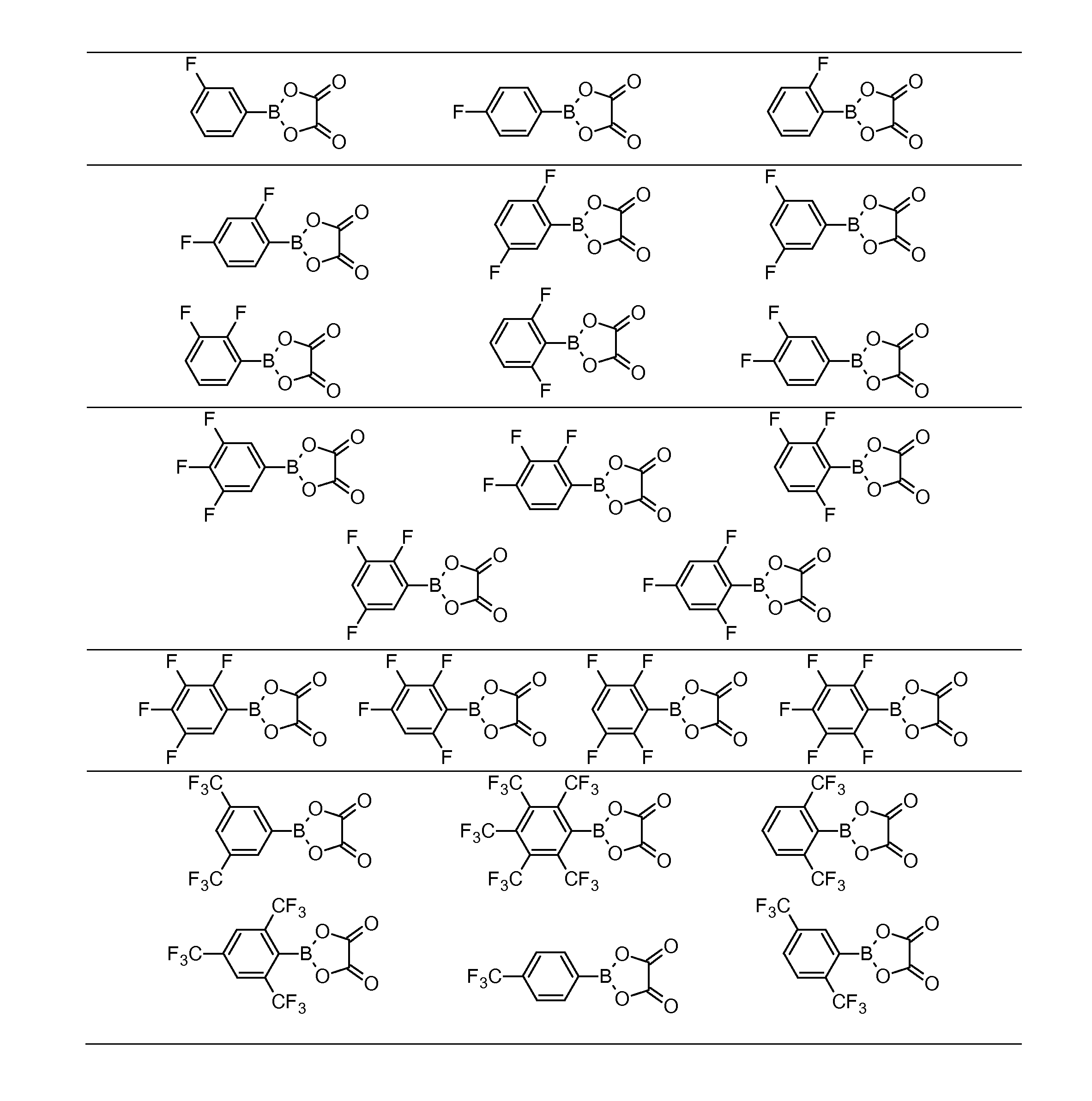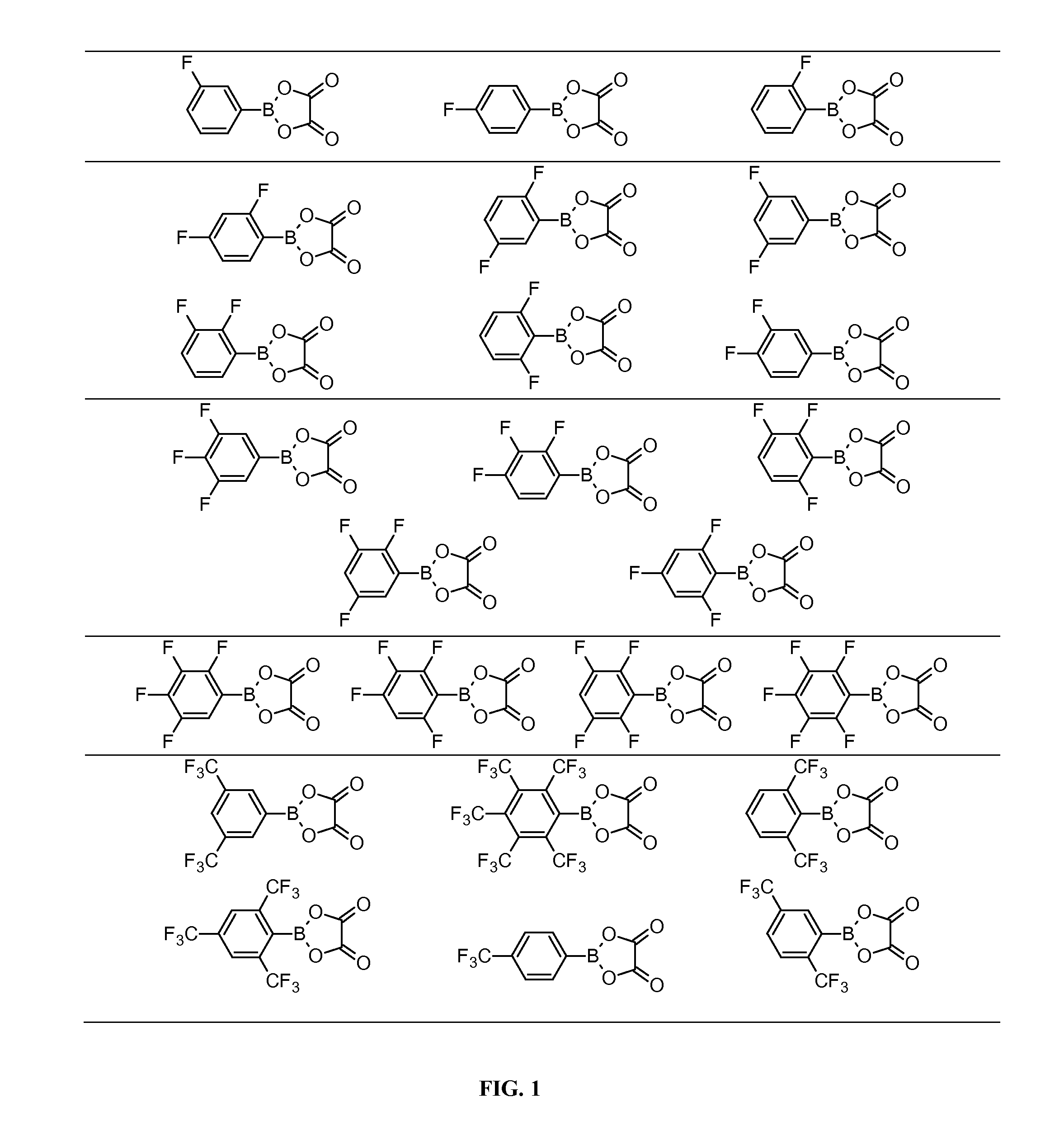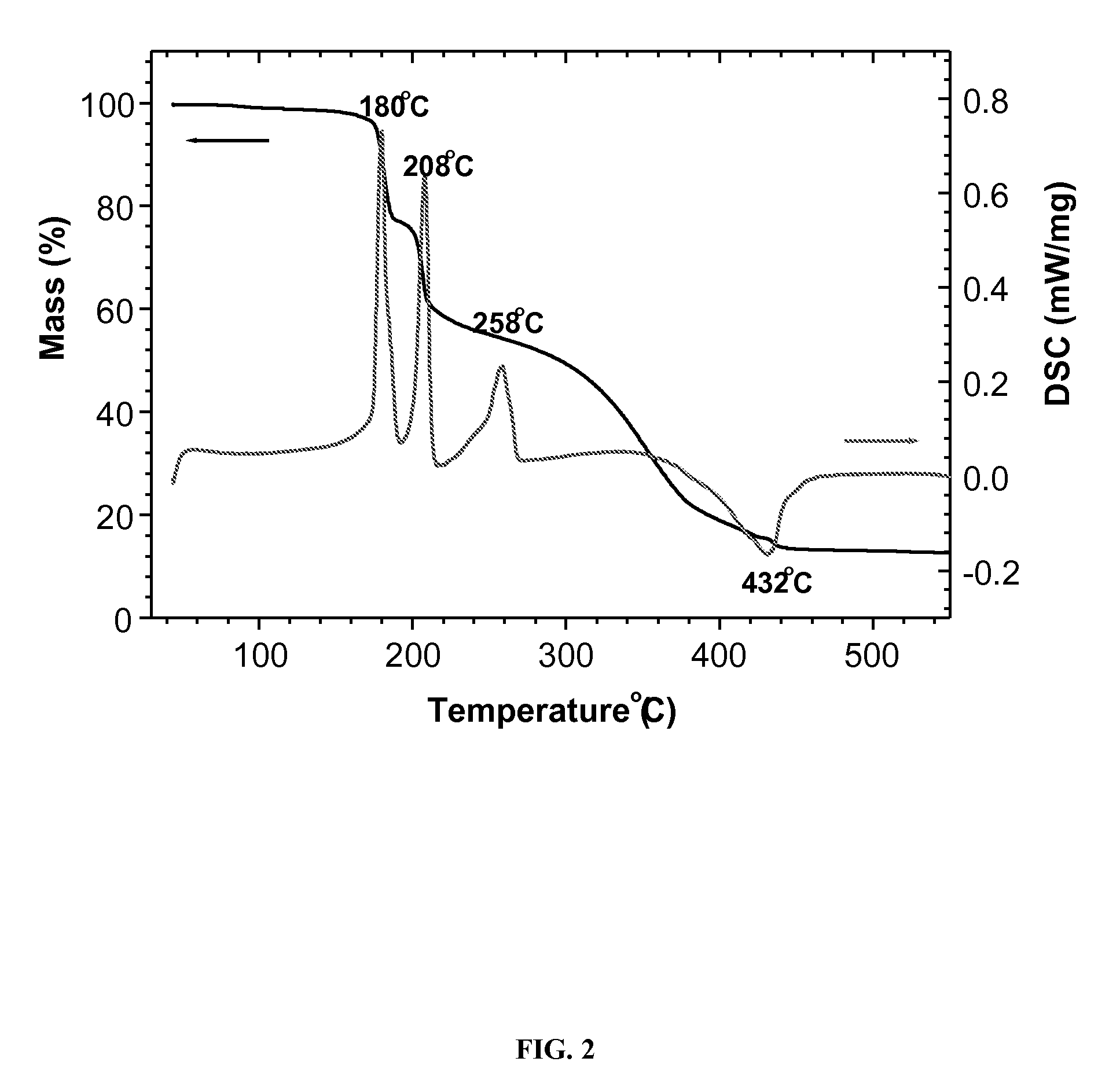Fluorinated Arylboron Oxalate as Anion Receptors and Additives for Non-Aqueous Battery Electrolytes
a technology of fluorinated arylboron oxalate and anion receptor, which is applied in the direction of non-aqueous electrolyte cells, cell components, group 3/13 element organic compounds, etc., can solve the problems of capacity fading, difficult handling, lack of thermal stability, etc., and achieve the effect of promoting dissolution and facilitating the formation of a sei layer
- Summary
- Abstract
- Description
- Claims
- Application Information
AI Technical Summary
Benefits of technology
Problems solved by technology
Method used
Image
Examples
example 1
[0083]This example illustrates the synthesis of FABO compounds summarized in Table 1. The boronic acid employed as starting material was purchased from Sigma-Aldrich (St. Louis, Mo.) except for the 2,5-bis(trifluoromethyl)phenyboronic acid, which was synthesized following the procedure outlined in U.S. Pat. No. 6,022,643, incorporated herein by reference. All moisture sensitive reactions were carried out under argon.
[0084]A mixture of 0.05 M of arylboronic acid and 0.05 M of oxalic acid in 80 mL of benzene was refluxed until the collected water in a Dean-Stark trap was reached the expected theoretical amount based on the amount of starting materials (about 2-3 hours). After cooling the solid product was collected by filtration. The solid product was treated with ether solvent. After filtering out the insoluble solid (which is boroxin), the ether solution was concentrated by evaporation of ether. Then 20 mL of benzene was added to the residue. After leaving the benzene solution in th...
example 2
[0085]This example illustrates the preparation of electrolytic solutions of perhalogenated or peroxidated lithium salts (e.g., LiF, Li2O, Li2O2, LiPF6, and LiBF4) and fluorinated arylboron oxalates (e.g., compounds (5)-(9); Table 2), in non-aqueous solvents (e.g., PC / DMC, EC / DMC). In a dry glove box, 0.01-1.0 M of FABO was placed into a volumetric flask and the non-aqueous solvents or solvent mixtures was added. The mixture was shaken occasionally to allow all oxalate to dissolve. Then, 0.1-1.0 M of lithium salt was added into the mixture. The final mixture was shaken occasionally to allow all lithium salt to dissolve.
example 3
[0086]This example illustrates the conductivities of different electrolytes in a relative wide temperature range (see FIG. 5). FIG. 5 shows that all electrolytes have two slopes due to the liquid-solid phase transition below 0° C. and the activation energies for high temperature and low temperature are very similar.
[0087]PFPOB can solve LiF, Li2O and Li2O2, which means that this compound has the similar anion attracting effect as TPFPB BBAR.
PUM
| Property | Measurement | Unit |
|---|---|---|
| molar concentration | aaaaa | aaaaa |
| molar concentration | aaaaa | aaaaa |
| molar concentration | aaaaa | aaaaa |
Abstract
Description
Claims
Application Information
 Login to View More
Login to View More - R&D
- Intellectual Property
- Life Sciences
- Materials
- Tech Scout
- Unparalleled Data Quality
- Higher Quality Content
- 60% Fewer Hallucinations
Browse by: Latest US Patents, China's latest patents, Technical Efficacy Thesaurus, Application Domain, Technology Topic, Popular Technical Reports.
© 2025 PatSnap. All rights reserved.Legal|Privacy policy|Modern Slavery Act Transparency Statement|Sitemap|About US| Contact US: help@patsnap.com



